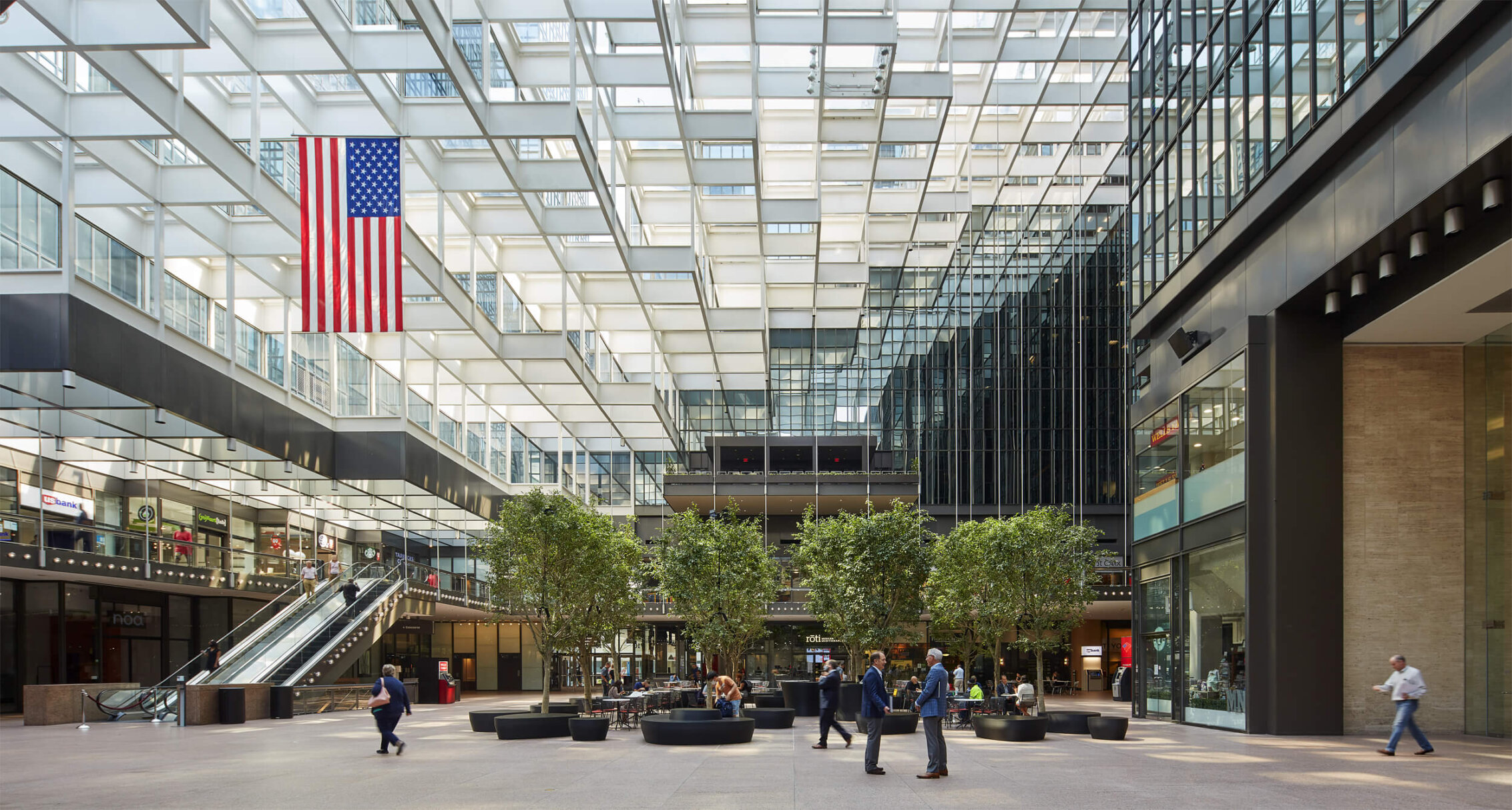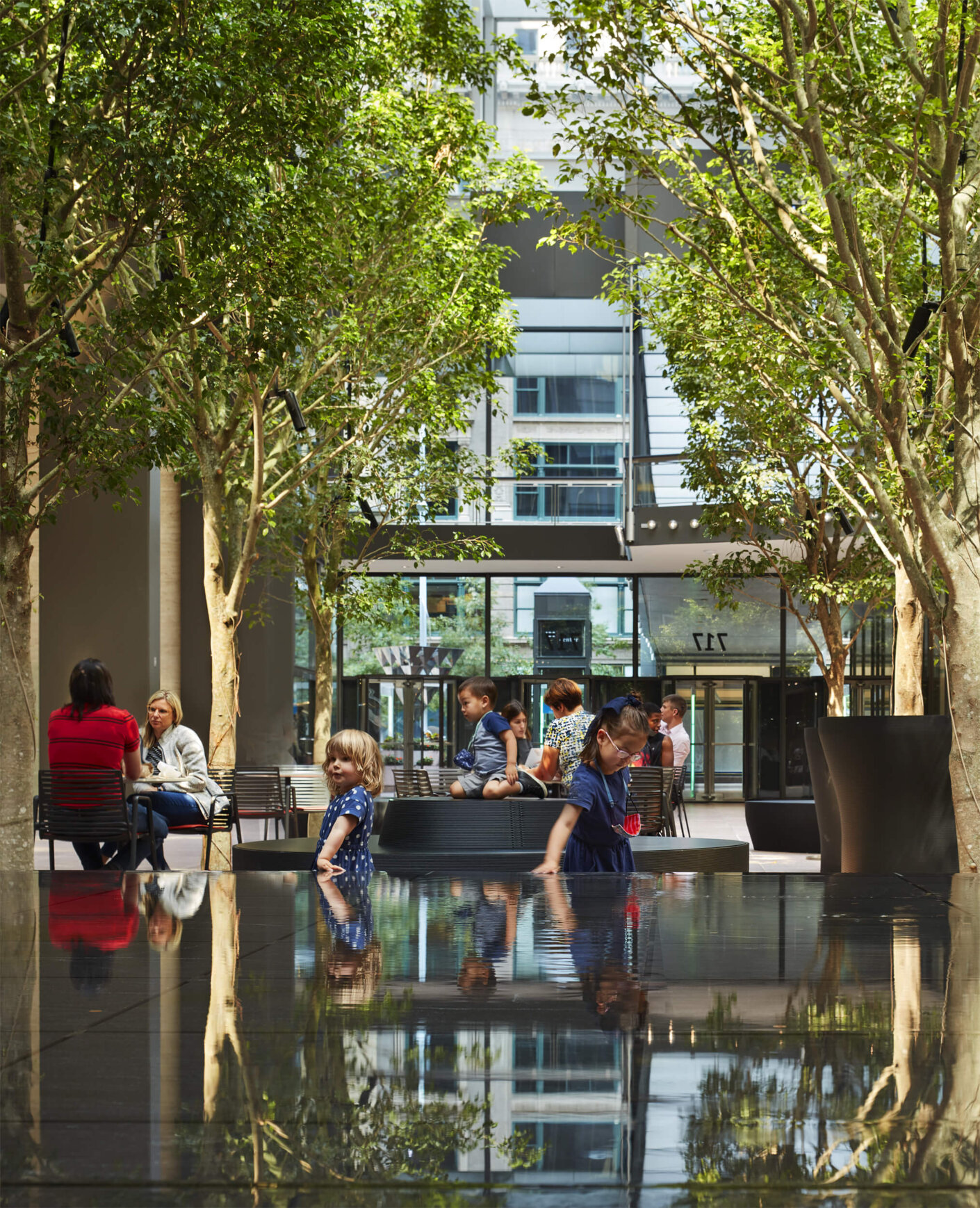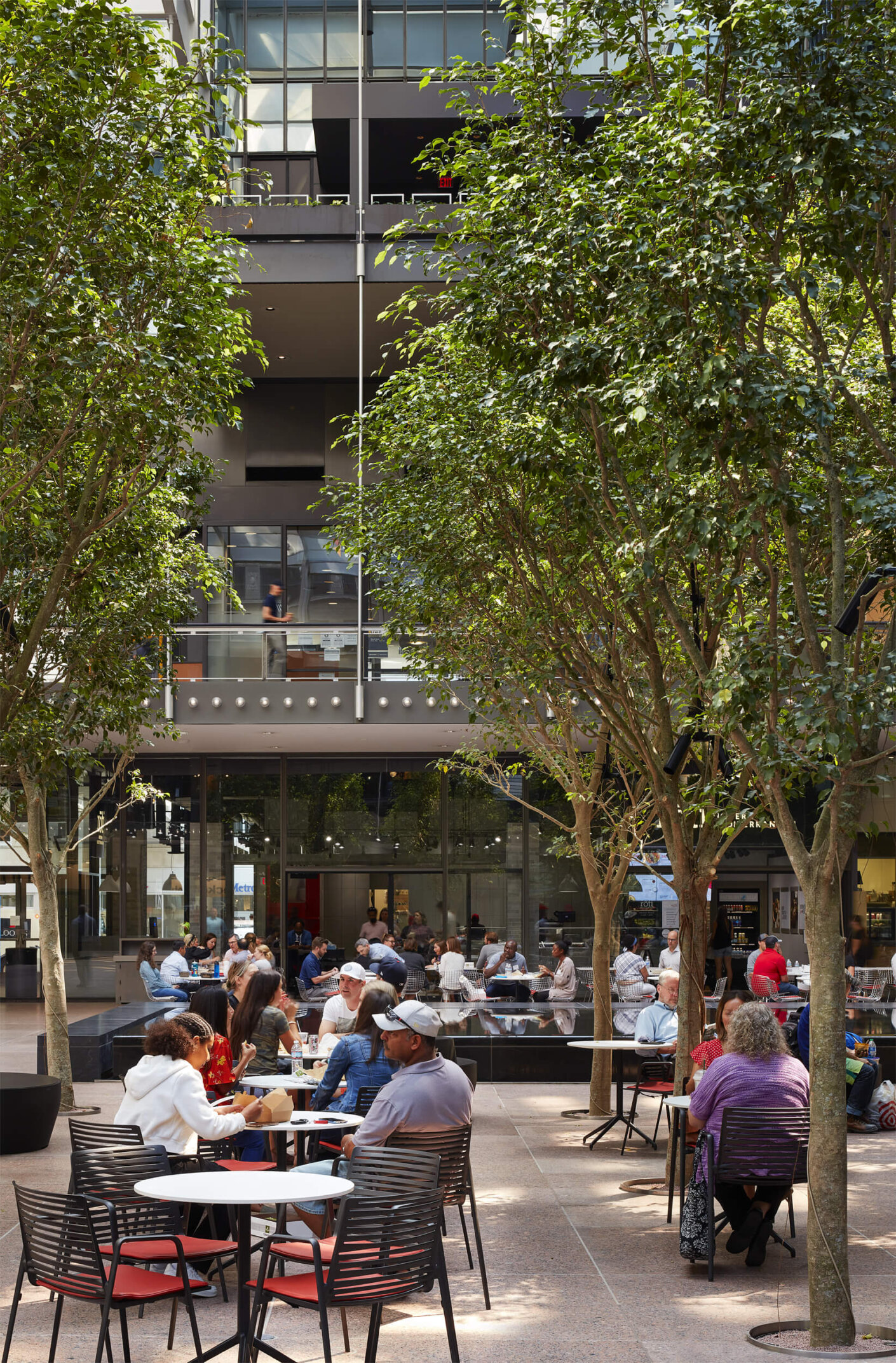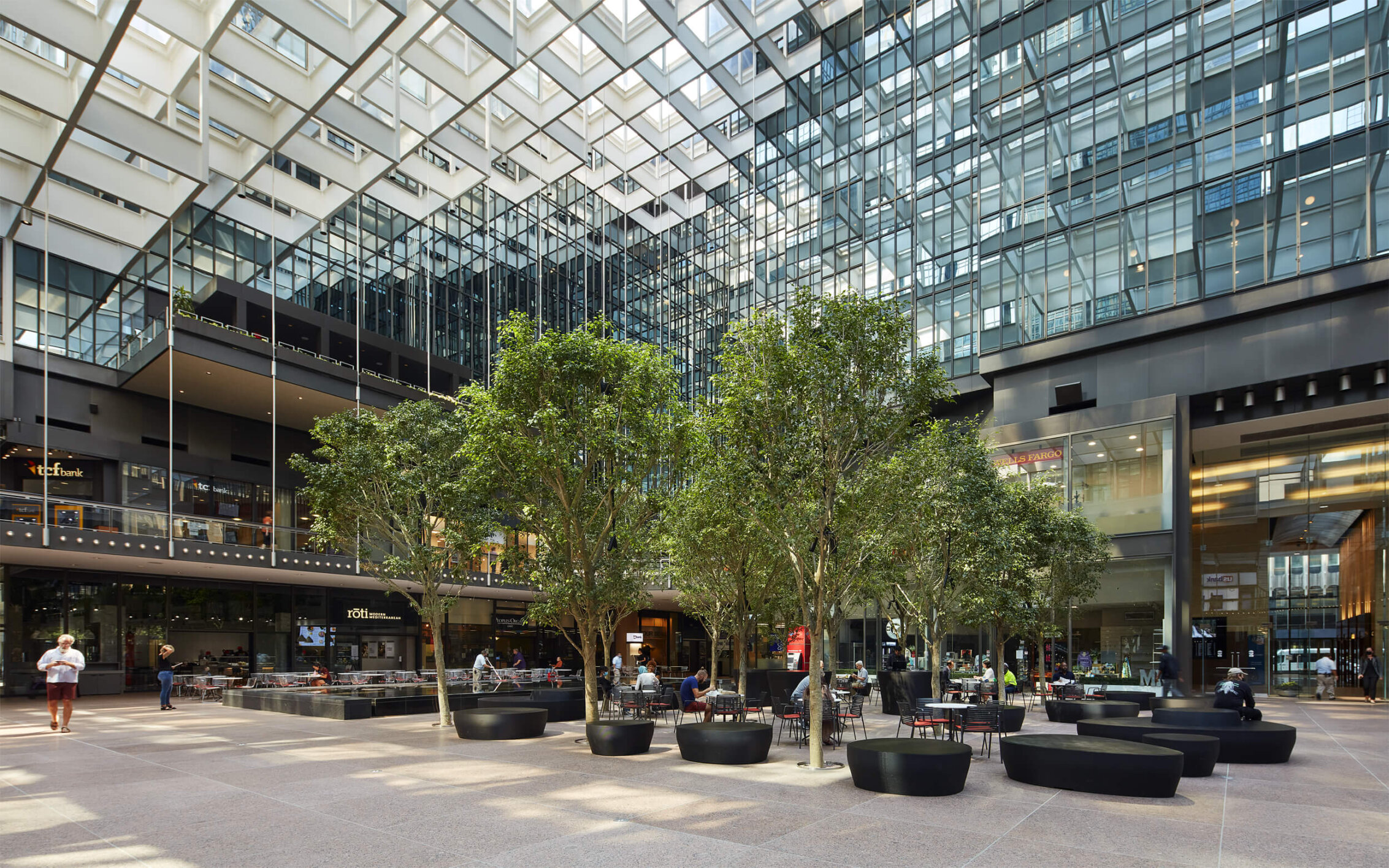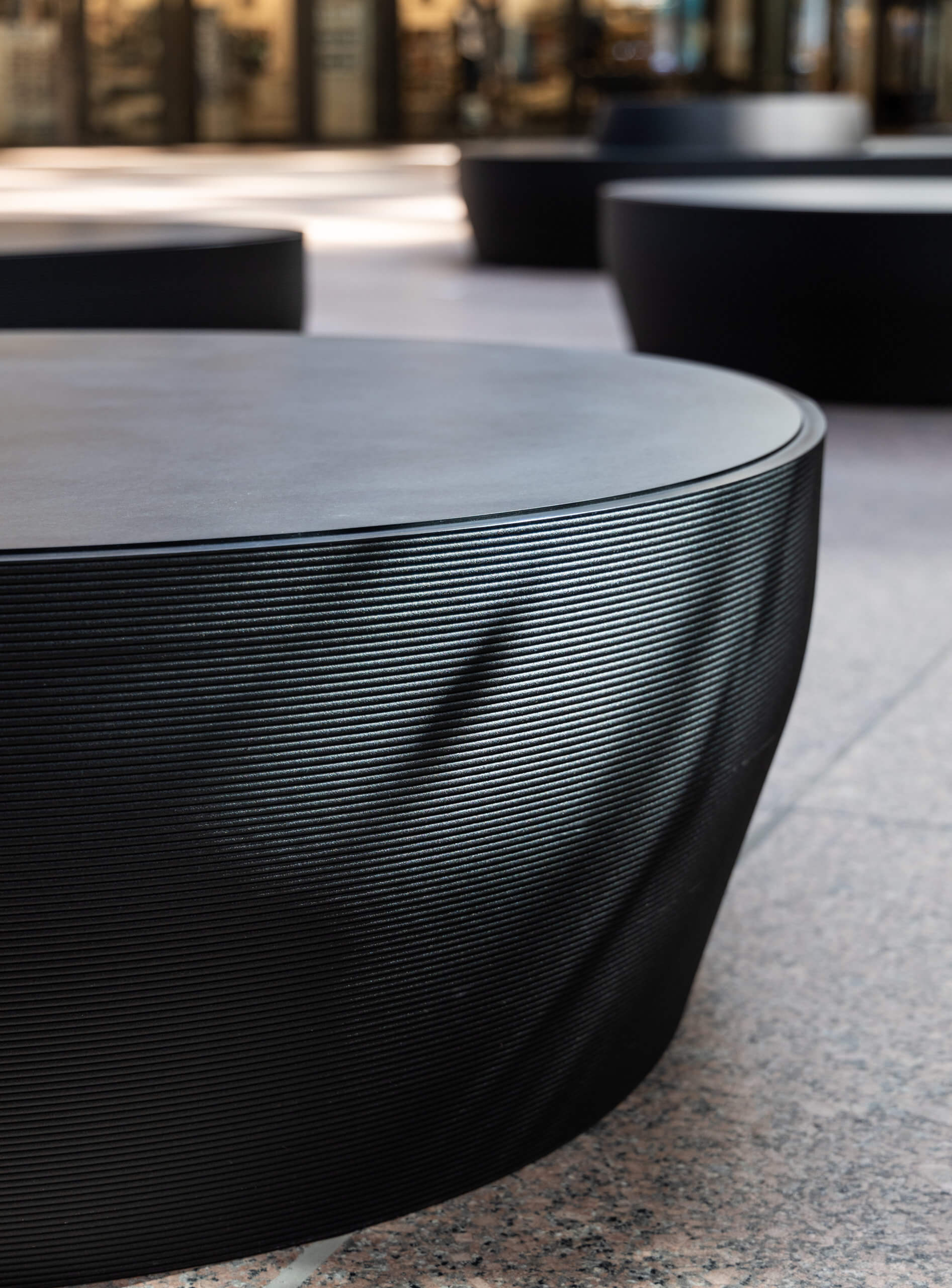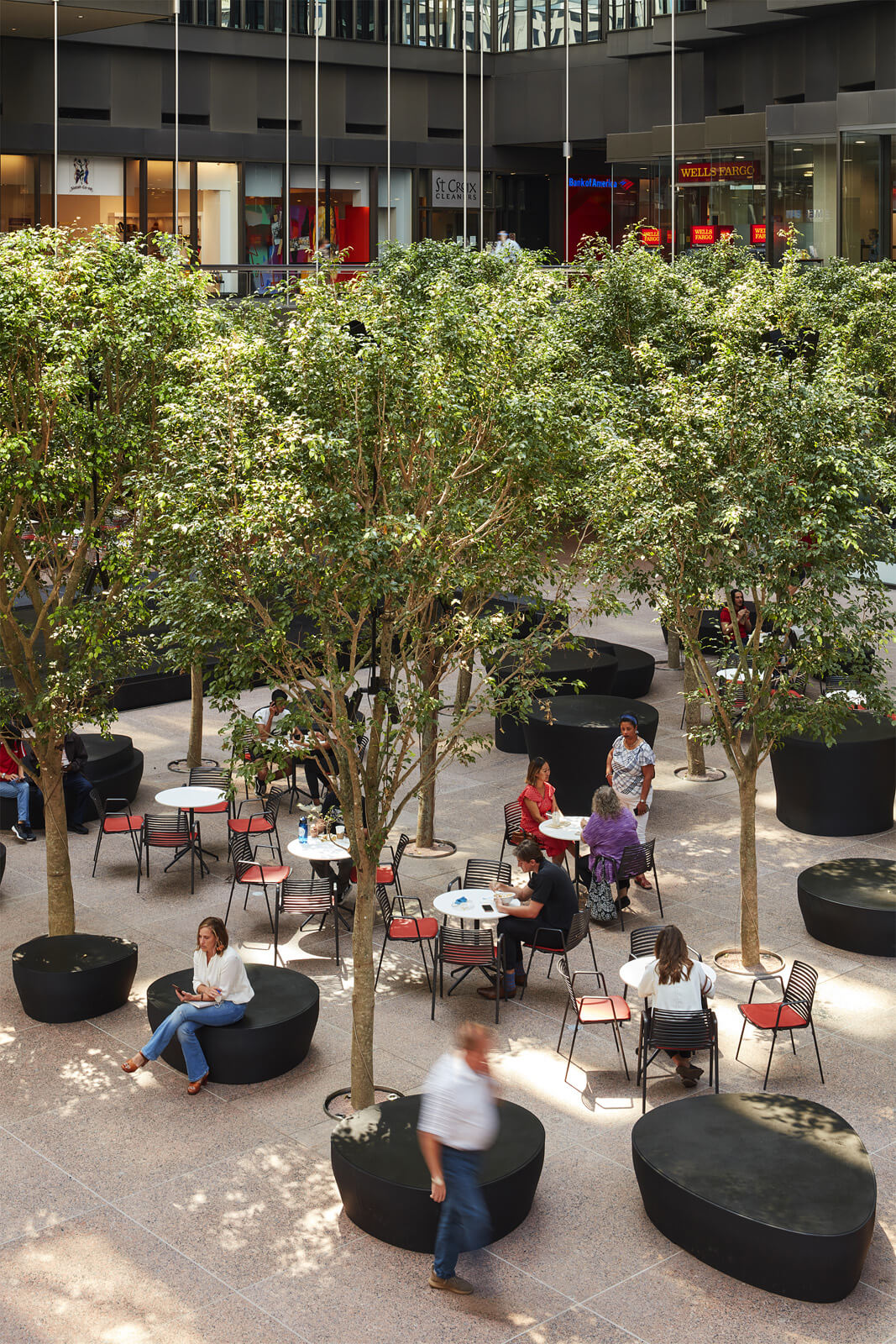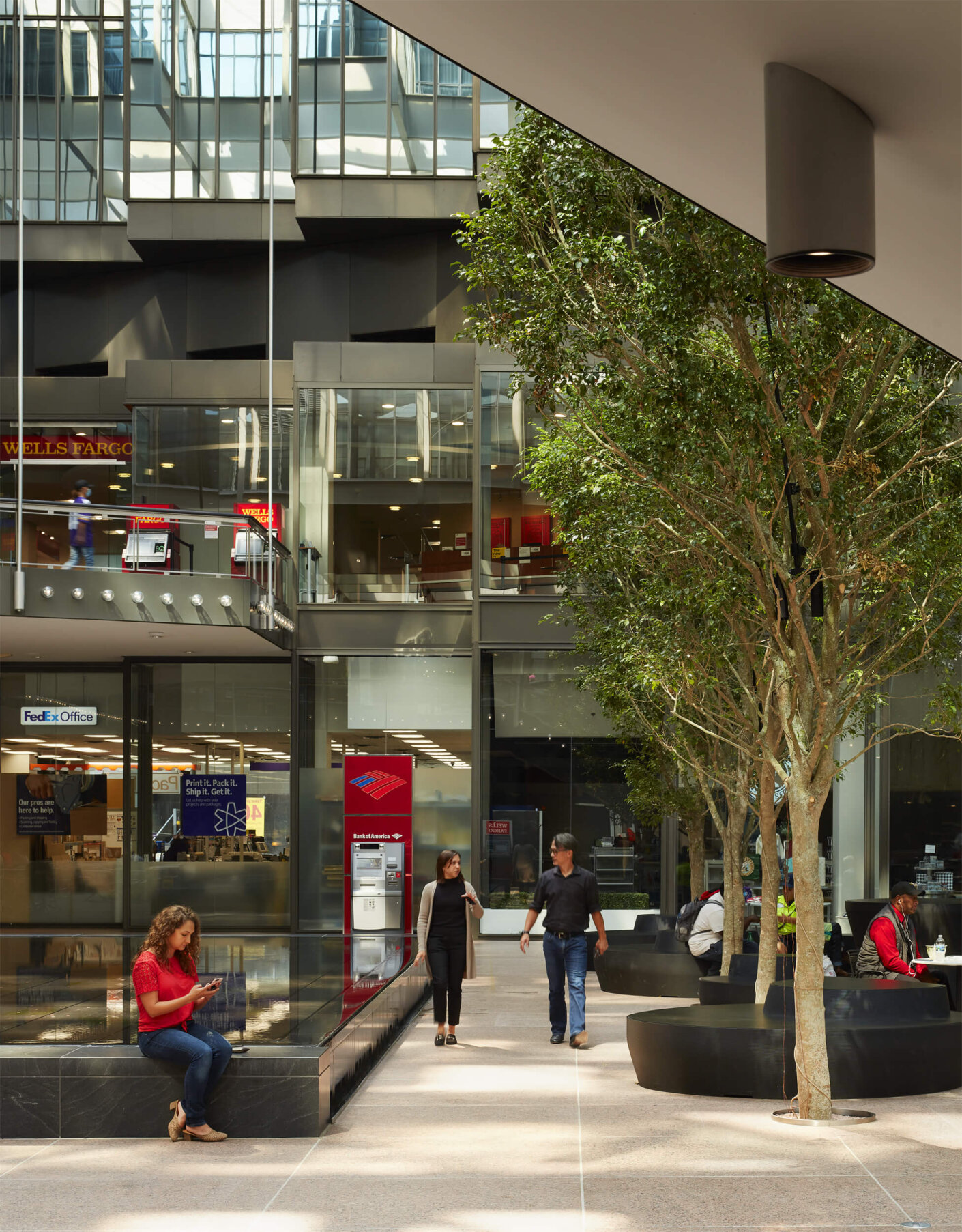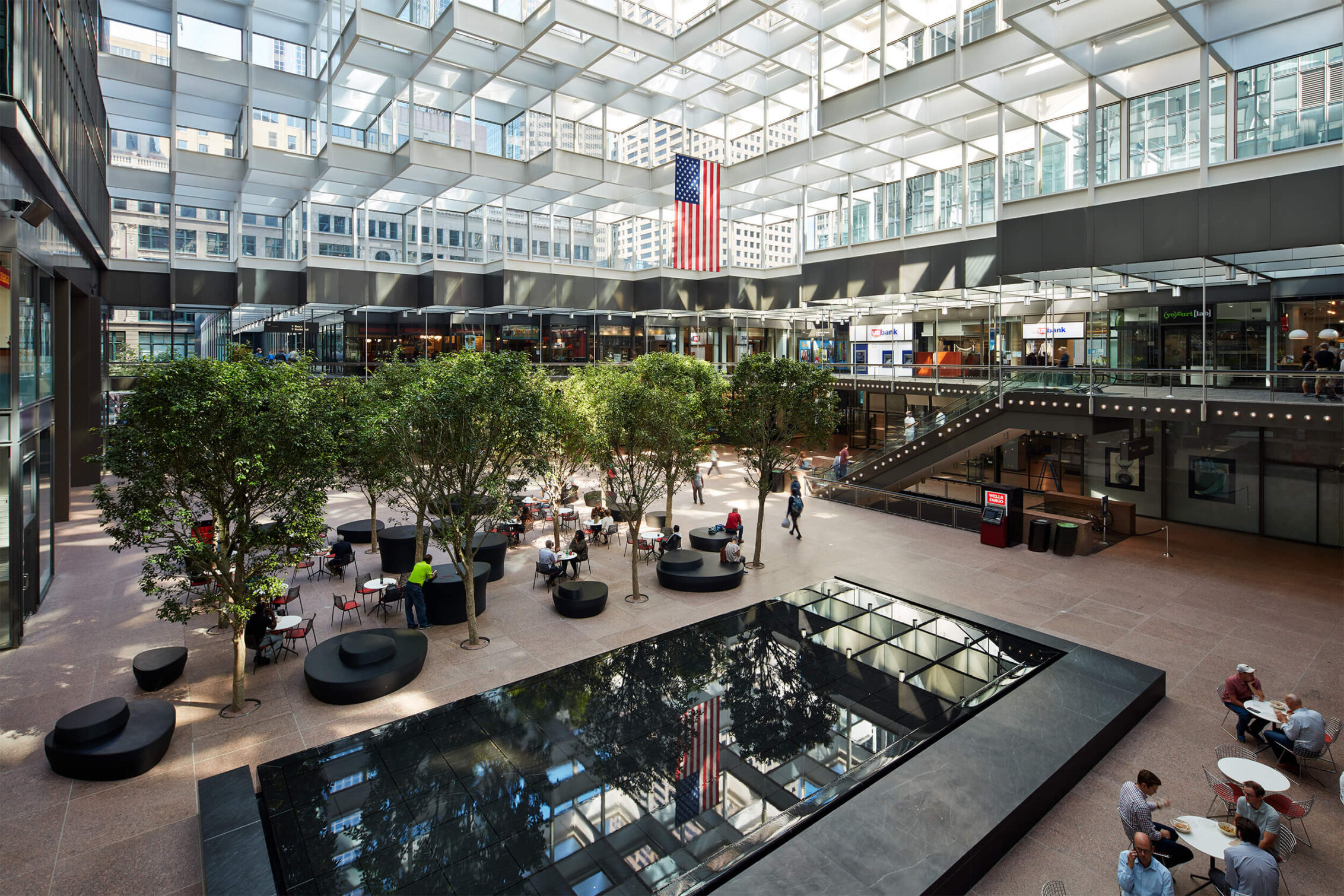When the IDS Center opened in 1972, it was described as the country’s first “social skyscraper.” Designed by an iconic architect, this 57-story mixed-use office tower’s distinct architecture punctures the skyline while its base sits rooted at the core of downtown Minneapolis. Crystal Court is the interior courtyard of the IDS Center and in 2021, Perkins&Will and New History, were tasked with renovating this important facet of the downtown community.
“For Philip Johnson, Crystal Court celebrated how people move across time,” says Tony Layne, Principal and Managing Director for Perkins&Will’s Minneapolis studio. “Time is shortened for pedestrians who flow quickly between street and skyway. Time is stretched for those who find an invitation to pause, gather and engage with water, trees, and light. We feel lucky to be refining how people engage now and in the future within this beautifully timeless place.”
